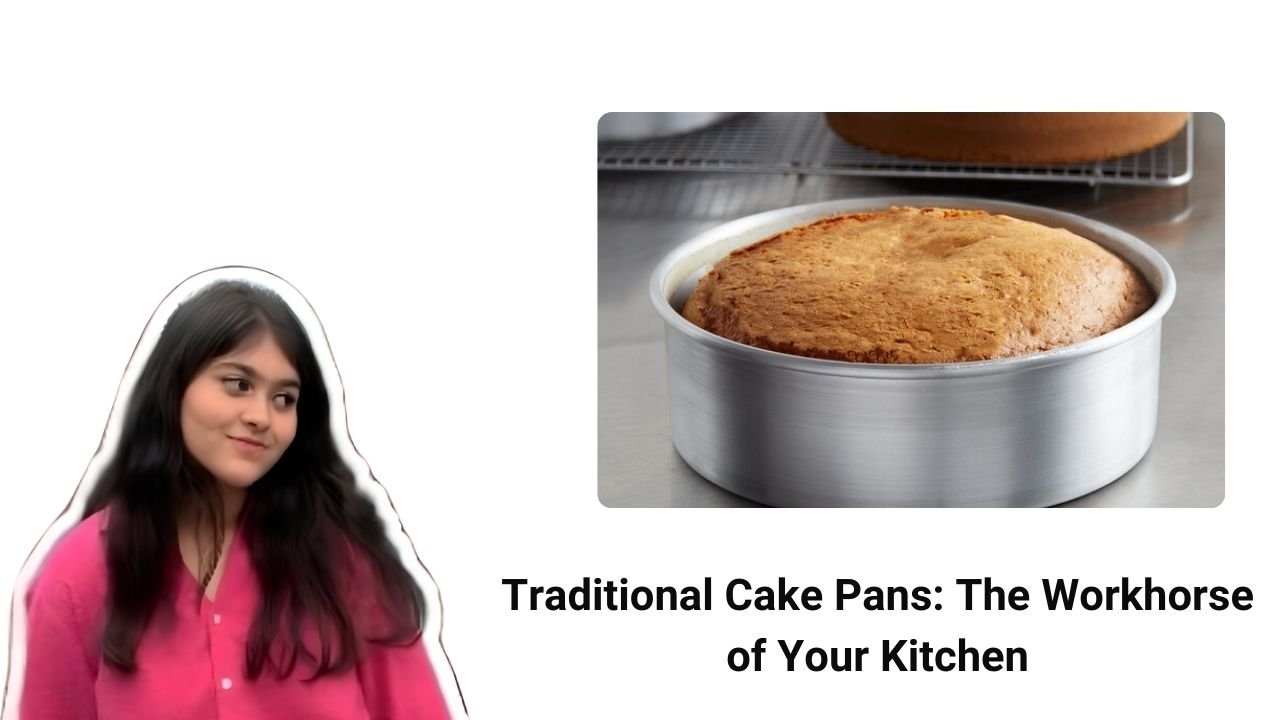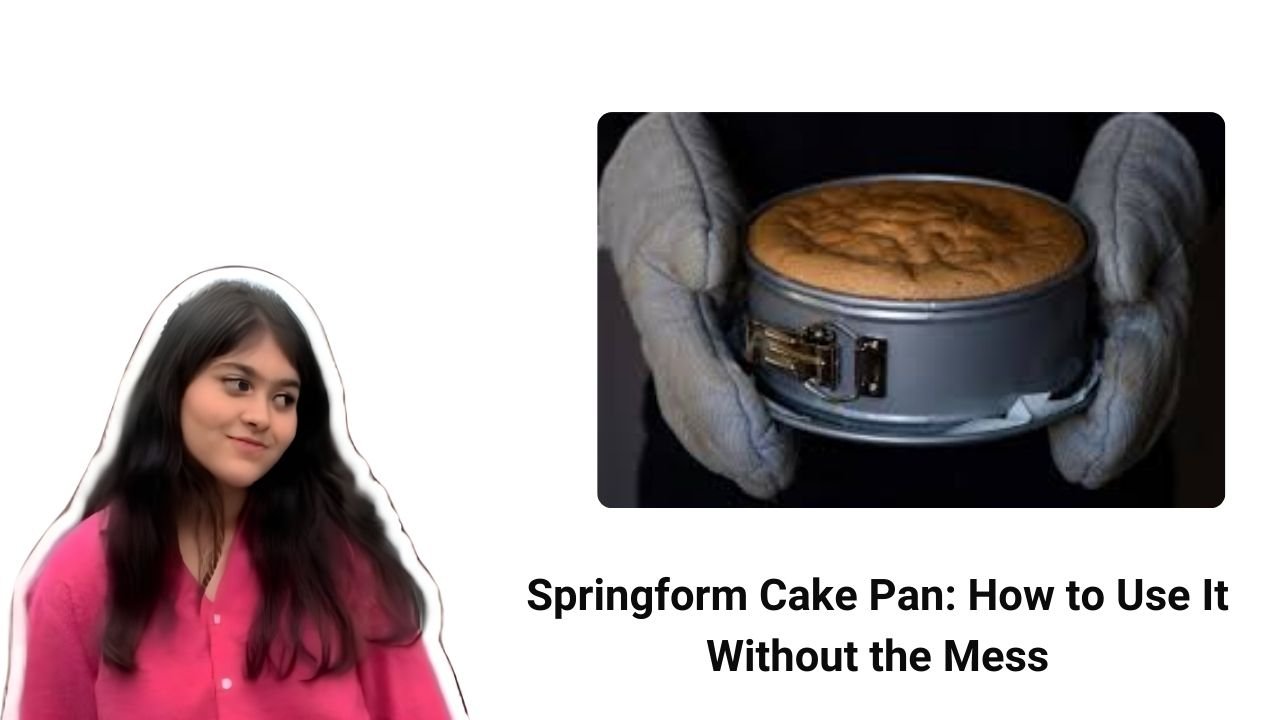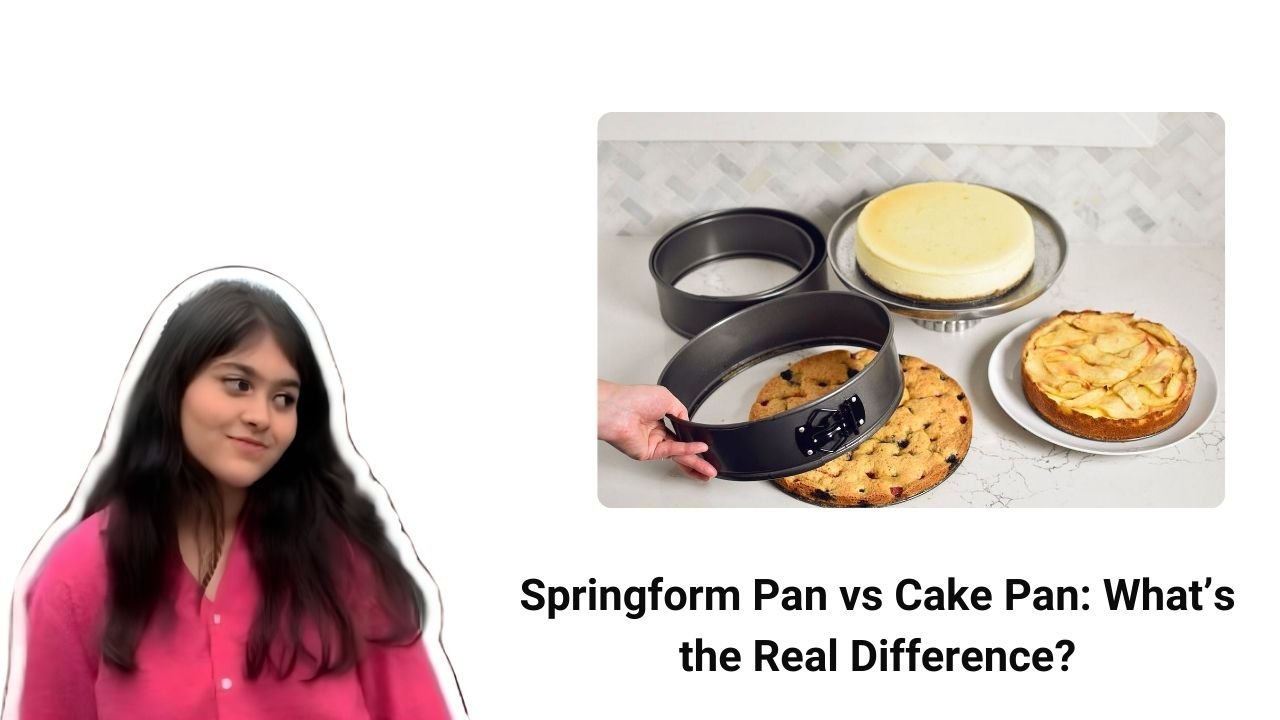Baking Isn’t Just About Ingredients—It’s About the Right Tools
Have you ever baked a cake that looked stunning in the oven but fell apart when you tried to take it out? I have. And more often than not, it wasn’t the batter’s fault—it was the pan’s. That experience launched my deep dive into understanding the real difference between a springform pan and a standard cake pan. And let me tell you, that knowledge changed how I bake forever.
Most people think bakeware is all the same, but it’s not. In fact, the pan you choose can be the secret sauce—or the silent saboteur—behind your results. In this article, I’ll break down the springform pan vs cake pan: what’s the real difference? from firsthand experience, kitchen mishaps, and successes that taught me more than any recipe ever could.
Springform Pan 101: A Genius Design for Delicate Desserts

When I first got my hands on a springform pan, I felt like I’d joined a secret baking club. Unlike regular pans, this one had a bottom that detaches from the sides. Genius, right? The sides of a springform are held together with a metal latch. Flip that open, and voila—the sides pop off, and you’re left with your beautiful cheesecake or torte still sitting pretty on the base.
Here’s why this pan is so magical for certain bakes:
- Removable sides mean zero flipping or wrestling with your dessert.
- Perfect for fragile bakes like cheesecakes, mousse cakes, or layered tortes.
- You can even use it as a serving tray—just unclamp and go.
I remember baking a classic New York-style cheesecake in my springform pan. When it cooled, I gently undid the latch, and the cake stood tall and flawless. No cracks, no crumbles—just creamy perfection. Try pulling that off in a standard cake pan, and you’re begging for trouble.
Traditional Cake Pans: The Workhorse of Your Kitchen

Now, don’t get me wrong. I love my cake pans. They’re the reliable, no-fuss friends in my baking drawer. Most standard cake pans have a solid, non-removable bottom and tall straight sides. They’re designed for simple bakes like vanilla sponge cakes, chocolate layers, or even banana bread in a pinch.
Here’s what makes them so versatile:
- They’re great for any batter that’s stable enough to be flipped.
- They’re usually cheaper and come in sets for layer cakes.
- Cleaning them is a breeze—no latches or seams to deal with.
I once used my old faithful 9-inch cake pan to whip up a lemon poppy seed layer cake for a friend’s birthday. The cakes flipped out beautifully with a little tap, and I didn’t even need parchment. The smooth sides made icing it easy too.
But if I’d tried that same bake in a springform pan, I might have had leakage or uneven edges. That’s why understanding what each pan does best is so crucial.
Comparing the Two: Side-by-Side Breakdown
Let’s be honest—when it comes to the whole springform pan vs cake pan: what’s the real difference?, sometimes a table helps. So, here’s how they stack up.
| Feature | Springform Pan | Cake Pan |
| Sides | Removable with latch | Fixed, non-removable |
| Ideal For | Cheesecakes, mousse cakes, tortes | Layer cakes, sponge cakes, loaf-style cakes |
| Ease of Release | Easy, minimal damage to cake | Requires flipping—can damage delicate cakes |
| Cleaning | Can be trickier with latch seams | Usually easier, fewer parts |
| Leak Risk | Higher, especially with runny batters | Lower, sealed bottom |
| Serving from Pan | Yes—can serve from base | No—needs removal |
| Price Range | Usually more expensive | More affordable, comes in sets |
The takeaway? Springform pans are specialists, while cake pans are generalists. One is a scalpel, the other a Swiss Army knife. You need both in your kitchen—just like you need both butter and olive oil, depending on the recipe.
Springform Cake Pan: How to Use It Without the Mess

Let’s get real—springform pans can be tricky. The first time I used mine, I poured in a delicate chocolate ganache batter, only to find half of it dripping onto my oven floor. Yep, it leaked. It was a mess. But I learned a few tricks.
If you’re going to use a springform cake pan, here’s how to avoid common disasters:
- Line the base with parchment before clamping to prevent sticking and leaking.
- Wrap the outside with foil if you’re using a water bath (essential for cheesecakes).
- Avoid very runny batters unless you’ve sealed the base well.
Over time, I even started using a 6-inch version for mini bakes. The Springform Pan, 6 Inch size is perfect for small desserts for two or practice rounds before the big event. It also fits beautifully in air fryers and toaster ovens—huge bonus!
What Can I Use Instead of a Springform Pan?
Here’s the thing. Sometimes you want to bake a cheesecake, but your springform pan is missing, dirty, or you’re baking at a friend’s house. So naturally, you ask: what can I use instead of a springform pan?
Here are some alternatives that can get the job done:
- A cake pan lined with parchment: Leave enough parchment up the sides so you can lift the cake out.
- A silicone pan: Super flexible, so you can peel it off the cake. But be warned—it won’t give sharp edges.
- A pie dish: Works in a pinch, especially for cheesecakes. Just serve it directly from the dish.
None of these are perfect, but they’ll work with the right expectations. Just don’t try to invert a cheesecake out of a regular cake pan—unless you enjoy heartbreak.
My Go-To Picks: The Best Springform Pan You Can Trust
After years of trial and error (and a few ruined desserts), I’ve come to rely on a few trusted brands. The best springform pan isn’t just about price—it’s about quality, design, and how well it handles delicate desserts. A good one should lock tightly, resist leaks, and release easily every time.
Here are some options I love:
- Nordic Ware Springform Pan – Heavy-duty, nonstick, and built to last. The locking mechanism is sturdy and doesn’t loosen with time.
- Cuisinart Chef’s Classic 9-Inch – A good balance of affordability and performance. It has a nonstick coating and a solid latch.
- Springform Pan, 6 Inch – Perfect for small households, date night desserts, or test batches. Some even come as a three-pack with multiple sizes!
If you want to skip frustration, don’t go for the cheapest option. A warped latch or leaky base will ruin your bake—and your mood.
Cake Pan Confidence: When It’s Better to Keep It Classic
Despite all the hype around springform pans, don’t sleep on your cake pans. When you’re making a layer cake, a dense chocolate loaf, or even a classic birthday cake, these pans shine. In fact, for any batter that firms up well and doesn’t need delicate handling, a traditional cake pan is more practical.
Here’s when to choose a cake pan over a springform:
- For even heat distribution: Cake pans tend to cook more evenly without worrying about gaps or latches.
- If you’re stacking layers: Flat, smooth sides make leveling and stacking a breeze.
- For recipes with thicker batters: Think carrot cake, banana bread, or pound cake—no worries about leakage.
And yes, I’ve baked cheesecakes in regular pans too—but only when I planned to serve them straight from the pan or didn’t mind a rustic look. If presentation matters, springform all the way.
Creative Ways to Use a Springform Pan (That Aren’t Cake)
What surprised me most after using springform pans for a while? They’re more versatile than I thought. I started using mine for more than just cakes—and honestly, it’s made weeknight dinners and potlucks way easier.
Here are some unexpected but awesome springform recipes:
- Deep-dish quiche: No more shallow pie pans. The tall sides are perfect for a rich egg filling and buttery crust.
- Lasagna or baked pasta: Stack those layers high, and pop off the sides for a beautiful presentation.
- No-bake desserts: Icebox cakes, tiramisu, and frozen mousses look amazing when the sides are removed cleanly.
- Layered savory bakes: I’ve done cornbread taco pie, mashed potato casseroles—you name it.
One tip: Always place your springform pan on a baking sheet before putting it in the oven, especially with liquidy or greasy dishes. Trust me, cleaning burnt cheese off the oven floor is no fun.
Springform Pan vs Cake Pan: What’s the Real Difference—Reddit Had Some Thoughts Too
Curious minds think alike. I once dove deep into a “Springform pan vs cake pan: what’s the real difference Reddit” thread, and the baking community didn’t hold back.
Some users swore by springform pans for everything, praising how easy they make cheesecake baking. Others, especially seasoned cake bakers, warned about potential leaks and poor-quality latches. A few even mentioned using aluminum foil to seal their springform bases—something I started doing religiously.
One thing stood out: almost everyone agreed that both pans have their place. It’s not about which is better overall—it’s about choosing the right one for the right job.
Springform Pan Sizes: One Size Doesn’t Fit All
Just like shoes, springform pans come in sizes—and the one you pick matters. I’ve used everything from a Springform Pan, 6 Inch for personal bakes to a whopping 10-inch one for big family events. The size can seriously affect cooking time and presentation.
Here’s a quick guide:
- 6-inch: Great for small servings, test recipes, or air fryer bakes.
- 8-inch: Standard size for most cheesecake recipes.
- 9-inch: A popular size for both baked and no-bake desserts.
- 10-inch and above: Ideal for large gatherings or deep-dish savory dishes.
Whatever size you use, always check the baking time. A larger diameter pan means a thinner batter layer and usually a shorter cook time. Smaller pans will need longer—but keep a close eye to avoid overbaking.
The Final Verdict: Which One Belongs in Your Kitchen?
So, springform pan vs cake pan: what’s the real difference? After dozens of bakes and some very real kitchen fails, here’s my honest take.
Go with a springform pan if:
- You’re baking delicate desserts like cheesecakes or mousse cakes.
- Presentation matters, and you want perfect sides and easy serving.
- You love experimenting with no-bake or layered creations.
Stick with a cake pan if:
- You’re baking everyday cakes, dense batters, or multi-layered treats.
- You want a durable, versatile pan that’s easy to clean and store.
- You’re on a budget or just starting out.
If you love baking even a little, I suggest owning both. Think of them as different tools in your toolbox—like a spatula and a whisk. They do different jobs, but together, they make your baking better.

Hey, I’m Nandoza Ahammad, passionate food enthusiast and creator of narzcookingcave.com, shares delicious recipes and cooking tips worldwide.

